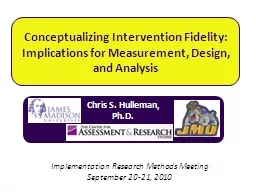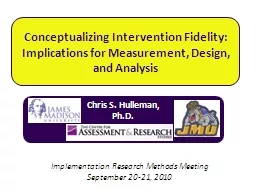PPT-Best Practices and Helpful Practices From the Fidelity Reviews
Author : yoshiko-marsland | Published Date : 2019-11-01
Best Practices and Helpful Practices From the Fidelity Reviews 1 Paul Smits LCSW Senior Policy Analyst University of South Florida M Scott Young PhD Research Assistant
Presentation Embed Code
Download Presentation
Download Presentation The PPT/PDF document "Best Practices and Helpful Practices Fr..." is the property of its rightful owner. Permission is granted to download and print the materials on this website for personal, non-commercial use only, and to display it on your personal computer provided you do not modify the materials and that you retain all copyright notices contained in the materials. By downloading content from our website, you accept the terms of this agreement.
Best Practices and Helpful Practices From the Fidelity Reviews: Transcript
Download Rules Of Document
"Best Practices and Helpful Practices From the Fidelity Reviews"The content belongs to its owner. You may download and print it for personal use, without modification, and keep all copyright notices. By downloading, you agree to these terms.
Related Documents














